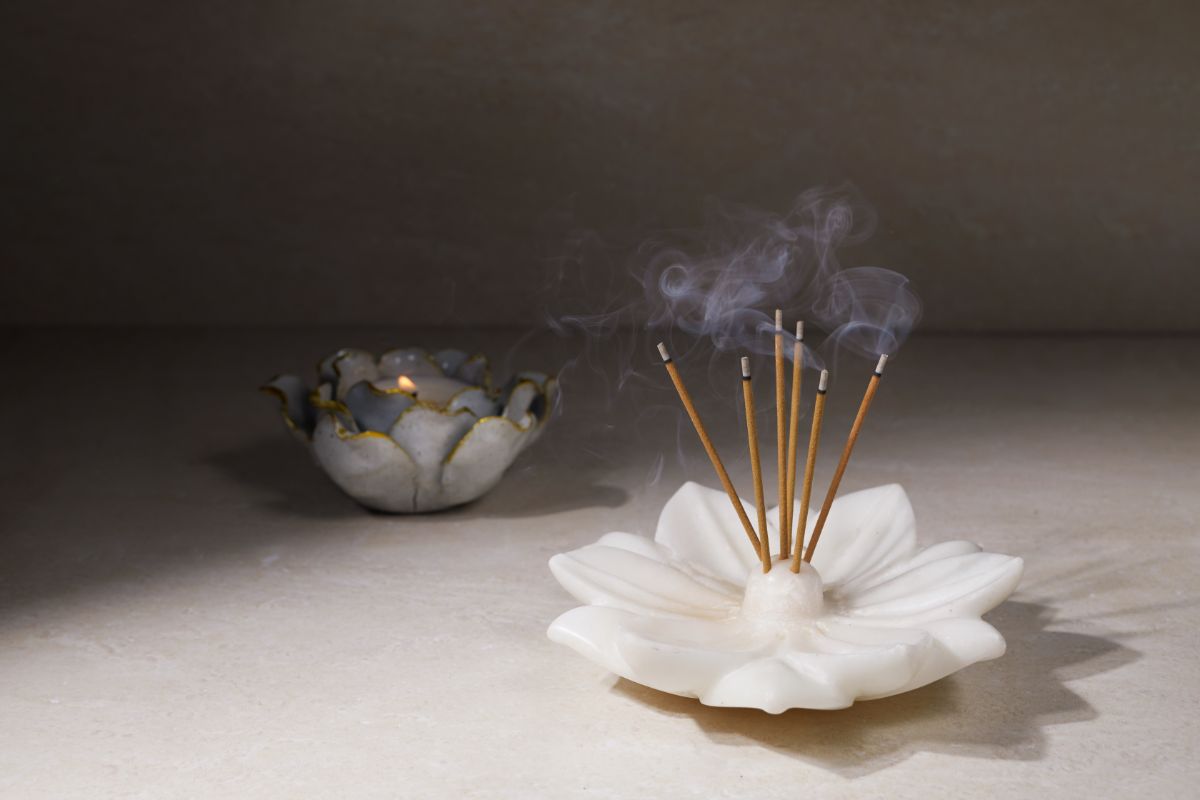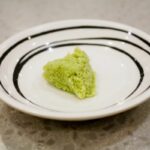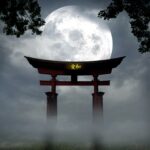Incense is a type of aromatic biotic material. When it gets burned, it produces a wonderful, fragrant scent that can fill up a room.
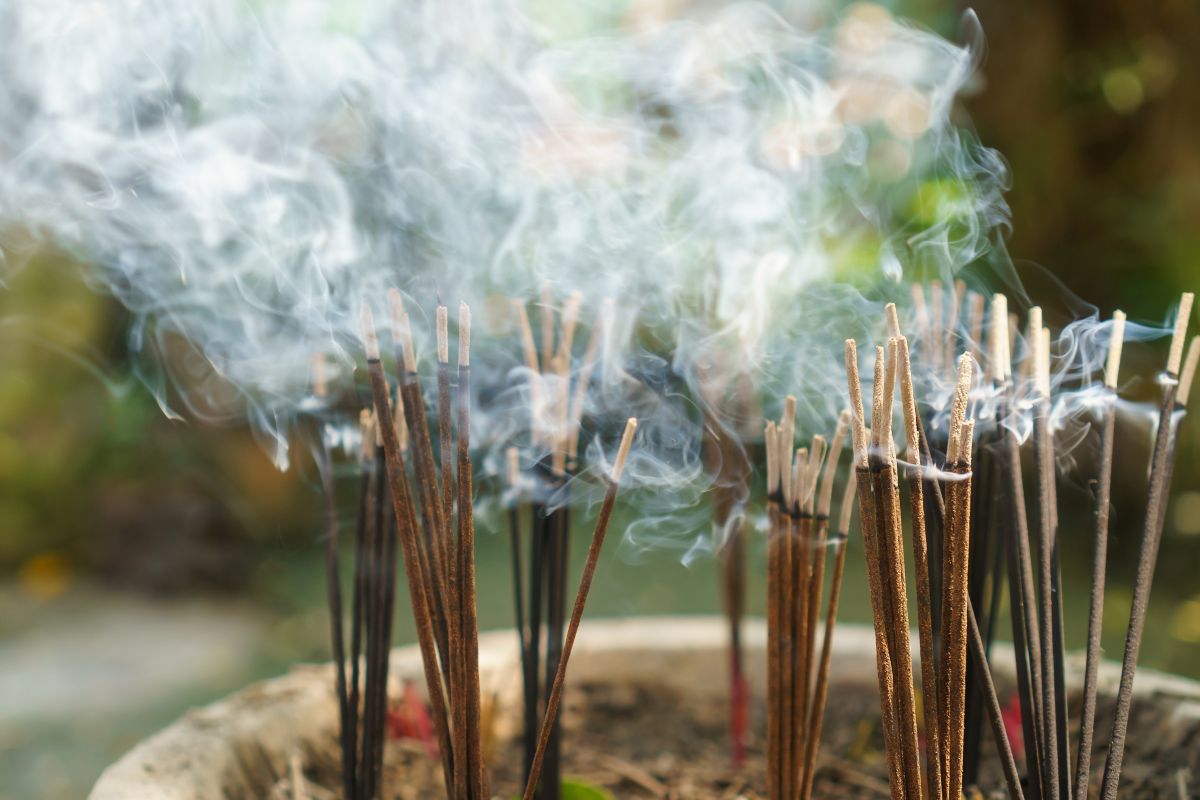
The word “incense” comes from the Latin “to burn”, and is used to refer to both the product that gets burned, and the smoke that it produces.
In Japan, and many other Eastern cultures, incense is an important part of spirituality and life.
What Incense Is Burned In Japanese Temples?
The incense used in Japanese temples is usually made from agarwood. This is a very fragrant kind of wood that gets imported from China to Japan. Agarwood incense is most commonly used in Shinto temples and shrines around the country.
As Buddhism is also one of the major religions in Japan, these temples also commonly use incense. However, this incense is different. While agarwood might still be a popular choice, sandalwood is the primary type of incense used in Buddhist temples.
In Buddhism, it is more appropriate to use coreless incense rather than a “solid” one. This is because the coreless incense will completely burn away and leave nothing behind, which is more symbolic.
What Is Incense Made Of?
Incense is typically made from a combination of resins, fragrant gums, spices, herbs, and wood powders. These all come together to create unique aromas, which may be used for different things.
The exact ingredients that are used in commercial incense is kept a secret. However, incense can be made non-commercially using the above ingredients, and it often is!
What Is Incense Used For?
Incense is commonly used for purifying sacred places, such as temples. It is also frequently used to make spiritual offerings at shrines, or even in the home.
Incense in Shintoism is also used as a means of bringing forth the gods, Buddhas, Bodhisattvas, demons, and other supernatural beings.
In Japanese culture and Shintoism, incense will also be burned during religious ceremonies and rituals. Meditation is also often accompanied by incense, and has been used in this way for many centuries.
How Is Incense Used In Japan?
To use incense, sticks or cones must be burned in order for the fragrant smoke to be released. The incense is lit, and the flame is blown out to allow the product to smolder.
In most cases, incense will be kept on an incense holder, but this might not always be the case.
Incense sticks are often speared into large incense holders rather than smaller ones, and several sticks are left to burn for hours.
Incense Ceremonies
There are even incense ceremonies in Japan due to the importance of incense. These usually involve a game where a person must try to guess what kind of incense they are sniffing.
While this is a fun idea, it is not all meant to be a game, as the people who take part should learn to “listen” to incense.
A variety of woods are used in these incense ceremonies to make it more difficult to guess the scent. Popular options include woods like cypress, and cedar, as well as sandalwood, and many more.
When Did Incense Start Being Used In Japan?
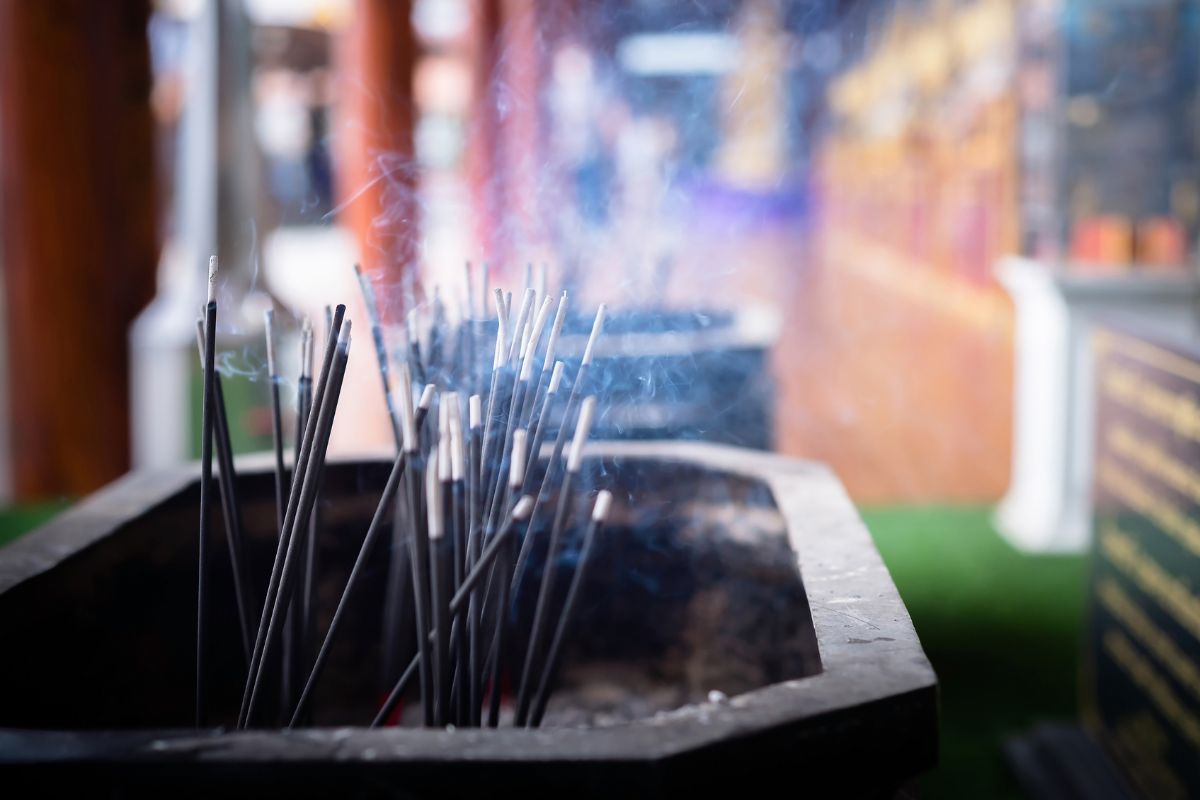
The use of incense goes back many centuries, and is even mentioned in “The Chronicles of Japan” or Nihon Shoki – the second-oldest book on Japanese history.
This book tells us about the first time that incense was recorded to be used in Japan, back in 595 CE.
The book talks about an agarwood log drifting ashore on Awaji Island, in Hyōgo Prefecture. The log was then presented to Empress Suiko and Prince Shōtoku as a gift.
While the prince was already familiar with the idea of burning incense from Buddhist practices, the practice of burning incense quickly became popular among Japanese nobility.
This, however, was only after the art was further developed, and it became easier to burn incense. After this point, the burning of incense and various other fragrant smells developed into a crucial part of court life in the Heian Period.
During this period, fans and robes were heavily perfumed, and a number of poems were written about incense. One popular poem is that of the Tale of Genji, which was written in the 11th century by a woman by the name of Murasaki Shikibu.
However, there are theories that this name is just a pseudonym for a lady-in-waiting in the Japanese Imperial Court called Fujiwara Takako.
When Did Incense Start Being Used In Other Countries?
It is thought that the use of incense dates back to over 6,000 years ago to the ancient civilizations of Egypt and Mesopotamia. Many consider incense to be among the first, if not the first fragrant material that humans used.
It was commonly used in balms that were needed for mummification in Ancient Egypt, but it was also burned in temples as a means of communicating with deities.
Incense was also used throughout Ancient Greece and Rome, and still is used there in modern times. In fact, incense is a crucial aspect in many different kinds of religious ceremonies around the world.
In religious holy books such as the Quran and Bible, incense is mentioned a number of times. Incense was even one of the gifts offered to baby Jesus by the Magi, along with myrrh and gold.
Today, incense and similar scented raw material is often associated with churches, and is used in ceremonies.
Is The Incense Used In Japan The Same As The Rest Of The World?
As we mentioned before, the primary materials or scents used in Japan are sandalwood and agarwood. This is different to many other places in the world.
For example, Egyptian incense is usually made from myrrh and frankincense, while the Greek Orthodox Church is known to use rose as well as frankincense and myrrh.
In China, the incense is made from Chinese cedar, sandalwood, and agarwood. In countries like Mongolia, incense is frequently made with thyme and juniper, and incorporated with horse and cow manure.
It is also important to remember that there are different kinds of incense, with hollow or solid structures. Some come in cones, others in sticks and whirls! There is even rope incense, which is commonly used in Tibet.
These different kinds of incense have varying levels of smoke, and might be used in different scenarios.
Final Thoughts
Japan primarily uses agarwood incense in Shinto temples, and sandalwood in Buddhist temples. However, both types of incense can be used in both temples.
Incense is used to help with meditation, and plays a key role in various rituals and ceremonies in the temples.
Because of the importance of incense in Japanese culture, there are even incense ceremonies, which help people to become more acquainted with various scents.
Buddhist practices have used incense for many years, and even used incense before most of Japan did. However, as incense was developed and became popular among Japanese nobles, it also worked its way into ceremonies and formal settings.
Now, incense is a key part of Shintoism, Buddhism, and a number of other religions around the world.
- 16 Best Websites To Watch Japanese Movies With English Subtitles - May 11, 2023
- Is ZIPAIR The Best Airline For Traveling To Japan? - May 11, 2023
- Ryu Murakami Vs Haruki Murakami – Which One Should You Read? - May 11, 2023

